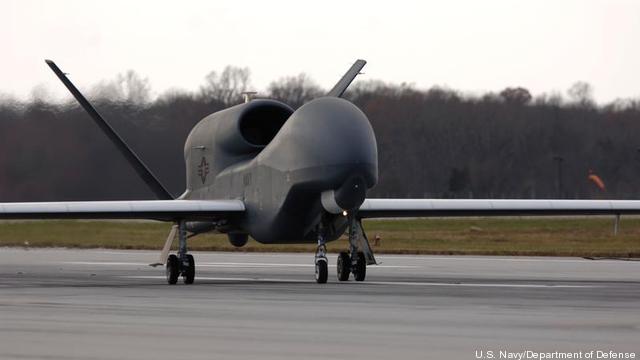One UAV Control Station to Bind Them All
Posted on
 Washington: The Joint Staff wants the Navy and the Air Force to run two of their high-profile unmanned aerial drones from one control station, despite Navy efforts to scuttle the program.
Washington: The Joint Staff wants the Navy and the Air Force to run two of their high-profile unmanned aerial drones from one control station, despite Navy efforts to scuttle the program.
The Joint Staff told the service teams in charge of the Navy’s Broad Area Maritime Surveillance UAS and Air Force’s Global Hawk UAS to come up with a way to fly both aircraft from one control station, BAMS Program Manager Capt. Jim Hoke said.
Getting the groundwork down for a common ground control station for those two UAS was the No.1 priority to come out of last month’s Joint Requirements Oversight Council last month, Hoke said yesterday.
The soon-to-be-released JROC memorandum from last month’s meeting will formalize the department’s plan to get the system back on track.
The idea of flying both the Global Hawk and the BAMS (which is essentially a seaworthy version of the Air Force UAS) from one station is not a new one.
Northrop Grumman, who is the prime contractor for both UAS, already had very preliminary prototype versions of the station in the works. But Naval Air Systems Command canceled plans for the ground station in February, citing a need to re-work the system requirements.
But DoD and the Joint Staff saw things differently.
The common ground station is still seen as a key part of the ongoing effort to increase synergies between the two programs, Hoke said. During the July JROC meeting, Navy and Air Force members gave updates other cooperative efforts for both unmanned systems.
Specifically, service officials briefed he JROC on steps taken to improve each aircraft’s sense and avoid systems. Sense and avoid technology allows unmanned aircraft to detect other planes in the area and change its course to avoid midair collisions.
The Navy is working on that type of system for the BAMS UAS, and there has been some ongoing “prep work” to see if that same system can be put on board the Global Hawk, Steve Enewold, BAMS program manager for Northrop Grumman, said today.
While swapping the Navy sense and avoid system into the Global Hawk is an option, Enewold noted that a complete transfer from the Navy to the Air Force UAS would require major structural and software changes on the air service’s part.
Subscribe to our newsletter
Promotions, new products and sales. Directly to your inbox.
